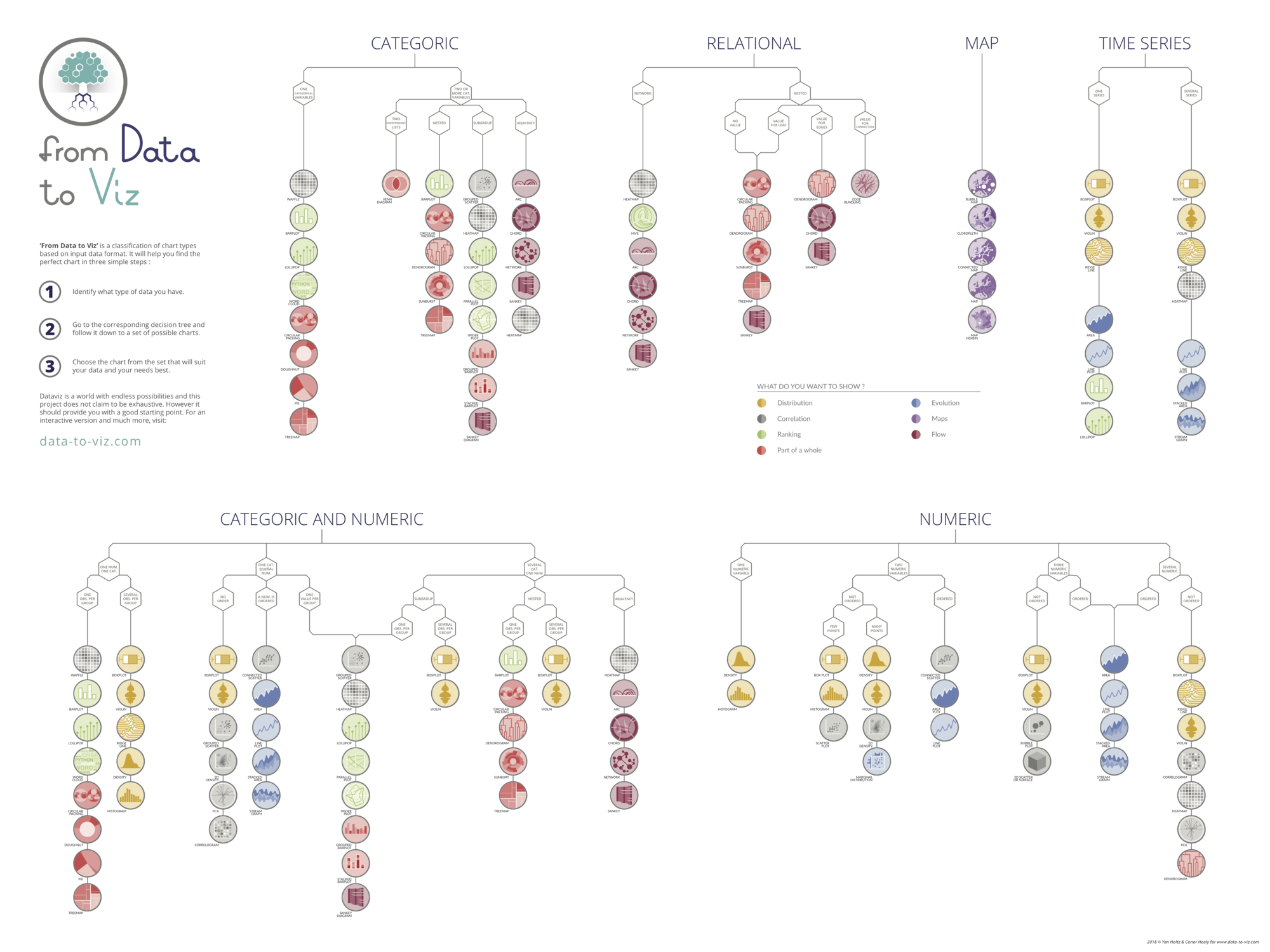Libraries
First, we need to load a few libraries:
- matplotlib: for basic plotting
- pandas: for data manipulation
mpl_toolkitsfor theBasemapmodule (maps)
from mpl_toolkits.basemap import Basemap
import matplotlib.pyplot as plt
import pandas as pdDataset
Let's load a dataset with geographical information (latitude and longitude columns):
data = pd.read_csv('https://raw.githubusercontent.com/holtzy/The-Python-Graph-Gallery/master/static/data/TweetSurfData.csv', sep=";")
data.head()| homelon | homelat | homecontinent | n | |
|---|---|---|---|---|
| 0 | -178.12 | -14.29 | Australia | 10 |
| 1 | -172.10 | -13.76 | NaN | 2 |
| 2 | -159.72 | 21.97 | NaN | 6 |
| 3 | -159.59 | 21.91 | North America | 4 |
| 4 | -159.53 | 22.10 | North America | 37 |
Background map
Let's start by building the background map of our bubble map thanks to the basemap library. The basemap library allows to load the boundaries of any region of the world without having to load a shapefile or a geojson file.
You can read more about this step in the map section of the gallery.
# Initialize the background map
plt.figure(figsize=(8, 10))
m=Basemap(llcrnrlon=-160, llcrnrlat=-75,urcrnrlon=160,urcrnrlat=80)
# Draw boundaries, continents and coastlins
m.drawmapboundary(fill_color='#A6CAE0', linewidth=0)
m.fillcontinents(color='grey', alpha=0.7, lake_color='grey')
m.drawcoastlines(linewidth=0.1, color="white")
# show
plt.show()Add markers
# Initialize the background map
plt.figure(figsize=(8, 10))
m=Basemap(llcrnrlon=-160, llcrnrlat=-75,urcrnrlon=160,urcrnrlat=80)
# Draw boundaries, continents and coastlins
m.drawmapboundary(fill_color='#A6CAE0', linewidth=0)
m.fillcontinents(color='grey', alpha=0.7, lake_color='grey')
m.drawcoastlines(linewidth=0.1, color="white")
# Add a point per position
m.scatter(
data["homelon"],
data["homelat"],
alpha=0.4,
s=1,
c="orange",
linewidth=1,
edgecolor="black"
)
# show
plt.show()Bubble size
It can be interesting to use the size of the bubble to represent a 3rd variable. In this case, the size of the bubble is proportional to the n in the dataset.
You can control the size of the bubble by changing the s argument of the scatter() function.
# Initialize the background map
plt.figure(figsize=(8, 10))
m=Basemap(llcrnrlon=-160, llcrnrlat=-75,urcrnrlon=160,urcrnrlat=80)
# Draw boundaries, continents and coastlins
m.drawmapboundary(fill_color='#A6CAE0', linewidth=0)
m.fillcontinents(color='grey', alpha=0.7, lake_color='grey')
m.drawcoastlines(linewidth=0.1, color="white")
# Add a point per position
m.scatter(
data["homelon"],
data["homelat"],
s=data["n"]/10
)
# show
plt.show()Custom bubble style
For better looking map, we can customize the bubble style with the following arguments:
alpha: transparency of the bubbleedgecolor: color of the bubble borderlinewidth: width of the bubble borderc: color of the bubble
# Initialize the background map
plt.figure(figsize=(8, 10))
m=Basemap(llcrnrlon=-160, llcrnrlat=-75,urcrnrlon=160,urcrnrlat=80)
# Draw boundaries, continents and coastlins
m.drawmapboundary(fill_color='#A6CAE0', linewidth=0)
m.fillcontinents(color='grey', alpha=0.7, lake_color='grey')
m.drawcoastlines(linewidth=0.1, color="white")
# Add a point per position
m.scatter(
data["homelon"],
data["homelat"],
alpha=0.4,
s=data["n"]/10,
c="orange",
linewidth=1,
edgecolor="black"
)
# show
plt.show()Going further
This post explains how to create and custom a bubble map with Python.
If you want to go further, you can also create a choropleth map or a connection map with Python.

